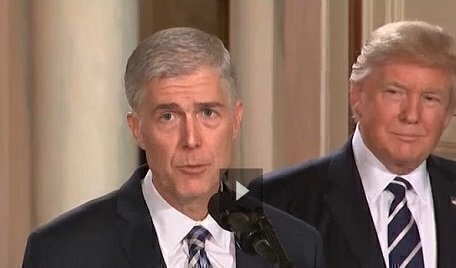Federal judge Neil Gorsuch starts his testimony in the Senate today and he will face tough questioning on many issues. So why do many experts believe Gorsuch will get a confirmation vote, with a likely approval?
 Gorsuch’s major challenge, barring any major issues with his testimony this week, will more likely be related to any efforts by the Democrats in the Senate to keep his nomination from getting a full vote by deploying the filibuster.
Gorsuch’s major challenge, barring any major issues with his testimony this week, will more likely be related to any efforts by the Democrats in the Senate to keep his nomination from getting a full vote by deploying the filibuster.
The filibuster and its related tactic, the cloture vote, require a vote by 60 Senators to let a motion, like Gorsuch’s nomination, to get a discussion and a vote by the full Senate.
Filibuster attempts against Supreme Court nominations are rare. To this day, there is a debate that tactics used in 1968 to delay the nomination of Associate Justice Abe Fortas as Chief Justice represented a true filibuster. President Lyndon Johnson withdrew that nomination after it has been approved by the Judiciary Committee but delayed in the Senate.
In three other cases, cloture votes were taken in the Senate about a Supreme Court nominee and all failed, in the cases of William Rehnquist (twice) and Samuel Alito.
And in 2017, the Senate’s Republican leadership has the option of changing the Senate’s rules to allow a vote on Gorsuch to proceed to the full floor without a cloture vote by killing the filibuster, using tactics deployed by former Senate Majority Leader Harry Reid in 2013. While the current Majority Leader, Mitch McConnell, is reportedly opposed to killing the filibuster using the “nuclear option,” President Donald Trump and other GOP leaders have urged the Senate to use that measure, if needed, to get a confirmation vote on the floor, most likely in April.
Barring a cloture vote succeeding – and the Republicans not using the nuclear option -- history shows that Gorsuch’s odds should be very good, at least for getting a Senate vote.
In every instance since 1945 when the same party controlled the White House and the Senate, that Supreme Court nominee was approved. (There were two nominees in the Lyndon Johnson administration who didn’t make it to the voting stage in the Senate.)
Also since World War II, there have been 38 official nominees for the Supreme Court offered by the President. Eight of those nominations were withdrawn, not voted on or rejected by the Senate. Of the 30 successful confirmations since 1945, 13 of the votes, or about 43 percent, came when the President’s party didn’t control the Senate. This was especially true when the Democrats ran the Senate for long periods during the 1960s and 1970s.
In the case of Gorsuch, with the Republicans controlling the Judiciary Committee and expected to make a positive recommendation of his nomination to the full Senate, it would be extraordinary for a GOP-controlled Senate to reject his appointment to the Court.
The last three Supreme Court nominees to be rejected in a Senate vote were candidates proposed by a Republican President to a Democratic-majority Senate. Richard Nixon saw two nominees, Clement Haynsworth and Harold Carswell, get just 45 yes votes in the Senate (the GOP had 44 Senators at the time). The well-publicized nomination of Robert Bork to the Supreme Court by President Reagan in 1987 saw Bork get just 42 votes in the Senate, when the Republicans had just 45 seats.
The last time a GOP-controlled Senate rejected a Supreme Court nominee from a Republican President was in 1930, when President Herbert Hoover’s choice for the Court, John J. Parker, lost in a 41-39 floor vote. Parker was opposed by organized labor and civil rights groups.
The only other Republican nominee for the Court to lose a floor vote in a GOP-controlled Senate was Ebenezer R. Hoar in 1869. Nominated by President Ulysses S. Grant, Hoar was opposed to patronage and didn’t support prior GOP efforts to remove Andrew Johnson from office. (Two other Grant nominees also didn’t make it to a floor vote.)
Given the high-stakes related to Gorsuch’s nomination, a short-handed Court and a politically charged atmosphere in Washington, only a situation involving the filibuster or an unforeseen circumstance would prevent Gorsuch from getting a floor vote.
But there have been a few of those in the history of court nominations. For example, President Andrew Johnson’s nomination of Henry Stanbery in 1866 so angered Republicans that they passed a law reducing the number of Justices on the bench, to avoid dealing with Stanbery. And in May 1881, Republican nominee Stanley Matthews was finally confirmed by one vote in a deadlocked Senate where control over the floor shifted due to attendance issues and political infighting. It had tabled Matthews' nomination just months earlier when made by outgoing President Rutherford B. Hayes.







